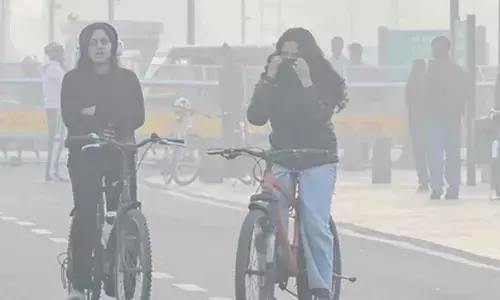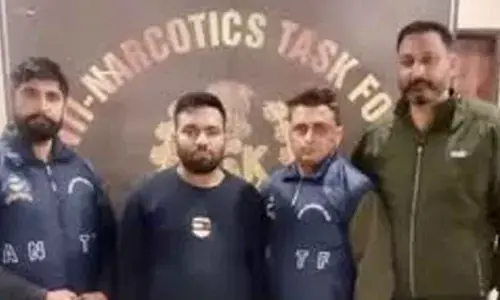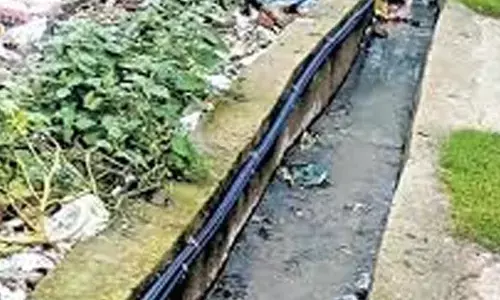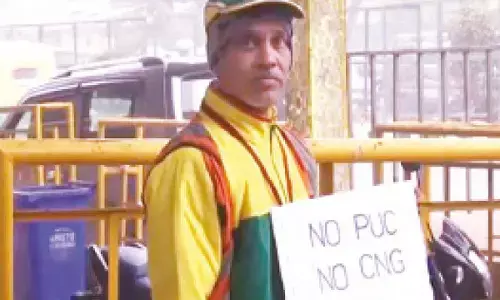Back to DCCJ diplomacy?

Malladi Rama Rao: Back to Delhi-Chennai-Colombo–Jaffna Diplomacy? Lankan Tamil issue dominates the Dravidian discourse in Tamil Nadu. It figured prominently in the wish list presented by Amma Jayalalithaa to Prime Minister Modi;
.jpg) A Sri Lankan editor, for whose online publication I write on the Indian scene, has come up with an interesting theory the other day in Jaffna. It is a spin on the Rama-Ravana story we are familiar with. My friend is a blueblood Hindu, and knows the Ramayana story by heart. So what he said naturally startled his audience just as much as it did for me when I read about his account.
A Sri Lankan editor, for whose online publication I write on the Indian scene, has come up with an interesting theory the other day in Jaffna. It is a spin on the Rama-Ravana story we are familiar with. My friend is a blueblood Hindu, and knows the Ramayana story by heart. So what he said naturally startled his audience just as much as it did for me when I read about his account.
The occasion was farewell to Consul General of India V Mahalingham, who has been transferred to Guyana as India’s High Commissioner. The function was organised by Restoration Committee of Maviddapuram Kandasamy Kovil, a very ancient Lord Muruga temple in the island. The venue was the courtyard of the temple. Maharaja D S Ratnasabapathy Kurukkal, the chief high priest of the temple, presided over the farewell and held special prayers to invoke the blessings of the deity for the well- being of the departing Indian official. So, the audience was not prepared to hear what K T Rajasingham was about to say. He is Special Advisor to the Temple Restoration Committee.
“Right from the days of Ravana, India has been a foe in disguise (for Sri Lanka),” he said. And he went on to add: “Like Kachchativu, Rameswaram was an integral part of Sri Lanka. It was annexed to India after Aryan King Rama conquered Sri Lanka in the battle with the Tamil King Ravanan.”
 Rajasingham did not directly blame Rama of annexing Rameswaram. He put the blame on Vibhishana who succeeded Ravana, saying “the island of Rameswaram was ceded to the conqueror by a king who was put on the throne by the conqueror himself.”
Rajasingham did not directly blame Rama of annexing Rameswaram. He put the blame on Vibhishana who succeeded Ravana, saying “the island of Rameswaram was ceded to the conqueror by a king who was put on the throne by the conqueror himself.”
About Ravana, he had this to say: “From the days of Ramayana Sri Lanka remained Sri Lanka – a sovereign state unlike “puranic” India which comprised hundreds of princely states. During those days, Sri Lanka, especially Lankapuri in Southern part of Sri Lanka, was ruled by Ravanan, a Tamil Brahmin king. He not only ruled Rameswaram but also Janasthanam, Dandakariniyam and many other regions in South India.” Like many scholars in India, K T Rajasingham found fault with Valmiki’s critique of Ravana, and branding him as a demon king. “It is wrong to describe Ravanan as a demon and to say Ravanan and the Tamils who lived in Lanka were despicable beings without any scruples, though we can understand that there was an element of hyperbole in the narrative.”
“Ravanan and Tamils were called Asuras, Rakhshasas and Yakshas. But do you know Asura (A+Suras) in Tamil means a teetotaler. Likewise, the word Rakhshasa stands for one who protects the faith, culture and the way of life of Tamils. The word Yaksha was erroneously interpreted as demon in Pali by Buddhist chronicles. In fact, Yakshas were actually called Iyakkars (which means Archers - the ones who use bow and arrows - in Tamil) because of their strength, courage, and valour and for the supernatural powers ascribed on them”. Frankly this is an alien territory for me since my forte is political economy and strategic affairs. Mahalingam, the outgoing diplomat, did not engage Rajasingham in a dialogue either on these aspects of Ramayana story or on the current logjam over fishing rights in Palk Straits. “I will give my response to Rajasingham’s references some other time at some other place, not at this temple venue,” he reportedly said, according to a post on Asian Tribune.
At least on one aspect of Rajasingham’s Ramayana narrative, we can have no disagreement. It is that Ravana was a Brahmin by birth, and that after his death, his body was cremated according to the Brahmanical rites. Rama, according to him, had anointed “a Brahmin from Kashi as the ruler of Rameswaram, while three Kashi Brahmins were made rulers of northern, north-western and eastern portions of Sri Lanka, which continued to remain an independent kingdom, free from the over lordship of South Lanka.”
There can be little dispute with Rajasingham when he holds India responsible for the Tigers War with Colombo. The Indra Gandhi regime trained LTTE and Rajiv Gandhi ended up with IPKF mess. But his charge that India from the days of Indra Gandhi to date is involved in subduing Sri Lanka directly and surreptitiously is rather difficult to accept for any student of contemporary history.
Mahalingham was the first Indian diplomat to be posted to Jaffna after the Sri Lankan army liquidated five years ago the Tamil Tigers, whose dream was to carve out “Eelam” for ethnic Tamilians of the island nation. During his three-year stay as Consul General, he earned a lot of goodwill for India, which is evident from the fact that a farewell was organised on the premises of an ancient temple.
Well that is not germane to our story, but Rajasingham’s spin is since it appears to have many takers in Jaffna. Will it have a bearing on India-Sri Lanka discourse? This is difficult to say. With his first hand experience of Jaffna mood and mindset, Mahalingham is in a position to educate us but he has not. He has preferred to observe diplomatic silence – not only on the Ravana factor but also Rajasingham’s criticism that he did not take to task the India poachers in Lankan waters but worked overtime for the release of fishermen from Rameswaram arrested by Lankan Navy. On his part, as he told me on phone, Rajasingham was happy that he spoke on the subject in the presence of an Indian diplomat.
Lankan Tamil issue dominates the Dravidian discourse in Tamil Nadu. It figured prominently in the wish list presented by Amma Jayalalithaa to Prime Minister Modi; she wants India to take back Kachchatheevu, and makes a case for a UN probe into “genocide” in Sri Lanka and for a UN referendum on separate Eelam among Lankan Tamils in and outside the island nation. These demands have invited a sharp reaction from Colombo. Delhi is doing a Mahalingham. Does this portend a return to Congress-era Delhi-Chennai-Colombo–Jaffna (DCCJ) diplomacy?













